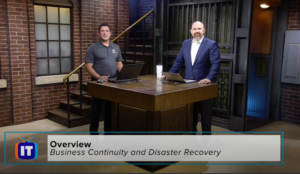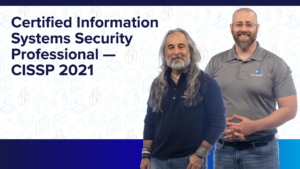
Information Security
Premium Course
Cybercrime And You: Staying Safe In A Hyper-Connected World
Understand the cybercrime landscape and the techniques that are used by cybercriminals to protect yourself from cybercrime and cybersecurity breaches.
Subscribe for Full Access
Get this course and all premium content for as low as $33/month.
Subscribe nowCourse Overview
In our hyper-connected world, where instant communication between people, data, and machines occurs over global, open networks, cybercrime has become an inescapable part of our daily lives.
More and more people are increasingly reliant on online spaces to live, study, work, and entertainment and leisure. However, without the requisite cybersecurity infrastructure and knowledge as we learn and work from home, we are now more vulnerable to various types of cybercrimes.
While organizations and governments work to find better ways to protect us, the best way to slow down cybercriminals is to know more about how they operate and take steps to keep ourselves safer online.
This non-technical course is designed to help you understand the kinds of cybercrimes that you, your loved ones, and your colleagues are vulnerable to. You will also learn some simple cyber-hygiene tips and strategies to safeguard yourself online. You will learn about the damaging effects of fake news and misinformation, and how we can do our bit by reducing its circulation.
Further, the course will take you through some of the main actors and issues with regard to law enforcement, and explains why catching the bad guys is so hard.
By better understanding the cybercrime landscape and the techniques that cybercriminals use to trap us, you will be in a better position to protect yourself, your loved ones, and your organization from cybercrime and cybersecurity breaches.
What You
Will Learn
- Understand the larger cybersecurity landscape and your role in keeping yourself safer online
- Be aware of the various forms and types of cybercrime, so that you can avoid becoming a victim
- Learn how to identify fake news and misinformation, and how to play your part in stopping the ‘infodemic’ of inaccurate information
- Learn some simple cyber-hygiene strategies and adopt non-technical cybersecurity best practices

Inside
the Course
6 Lessons | 22 Topics | 6 Quizzes
Course Content
Expand All
Lesson Content
0% Complete
0/3 Steps
Lesson Content
0% Complete
0/3 Steps
Lesson Content
0% Complete
0/2 Steps

Start Learning for as Little As $8 a Month!
Start Your FREE Two Week Trial
We are working day and night to bring you fresh courses every month. And we have brand new features in the works like guided career paths, hands-on labs and experiences, dedicated mentors, cyber range integration and so much more.



